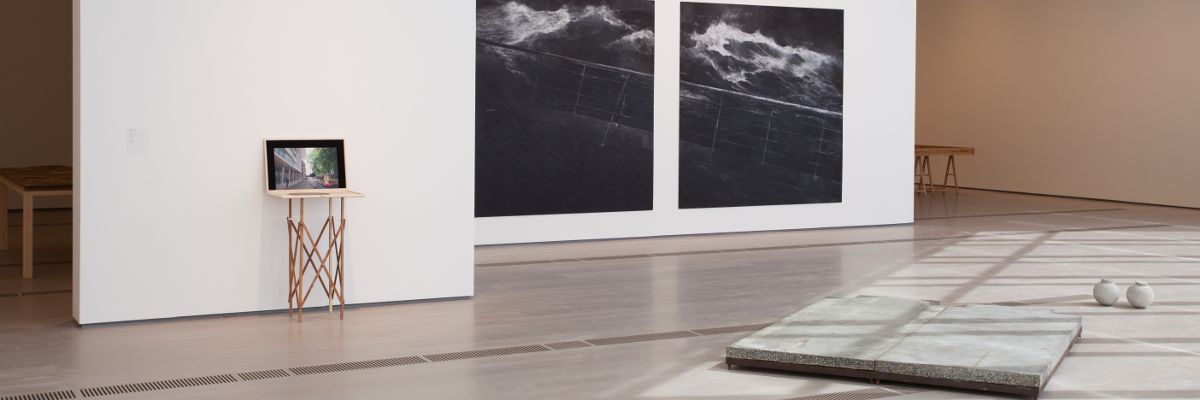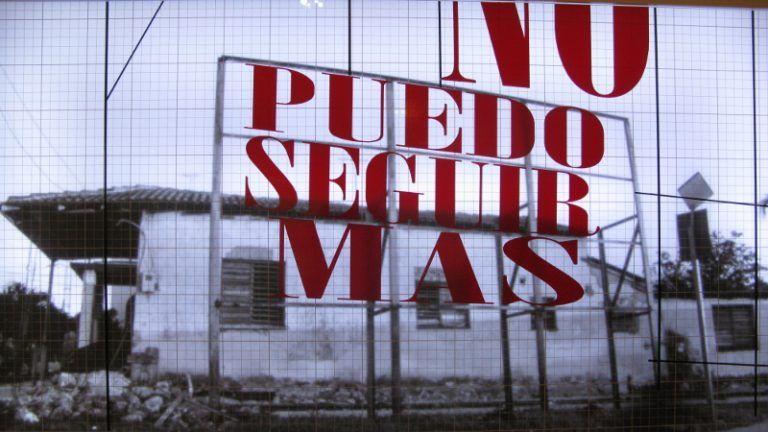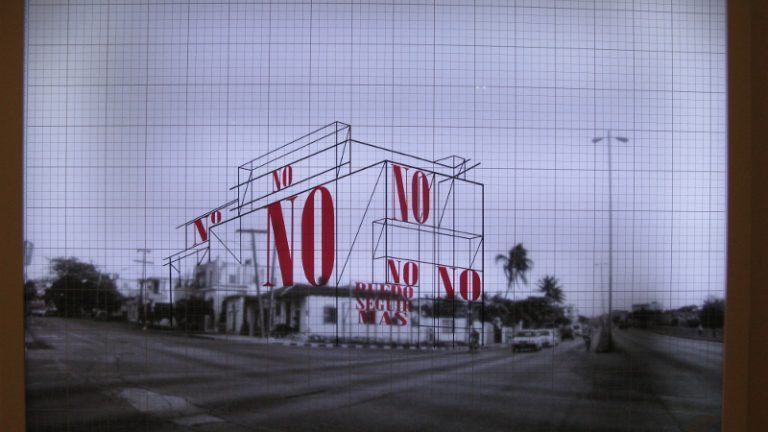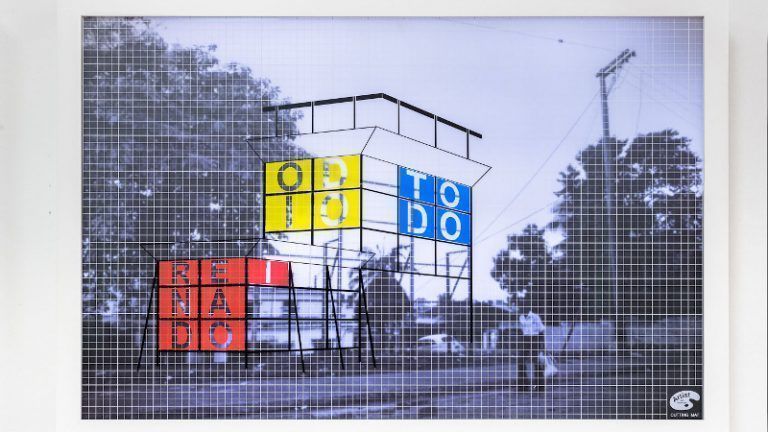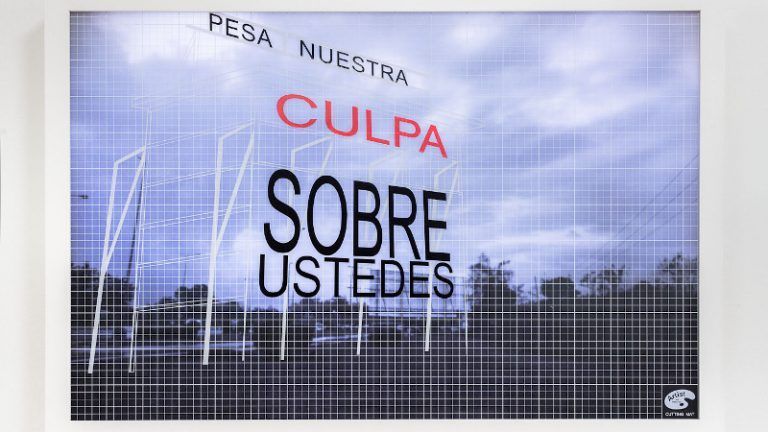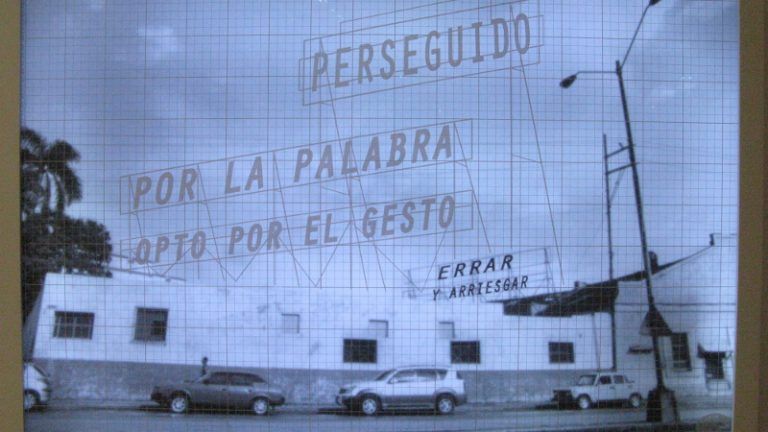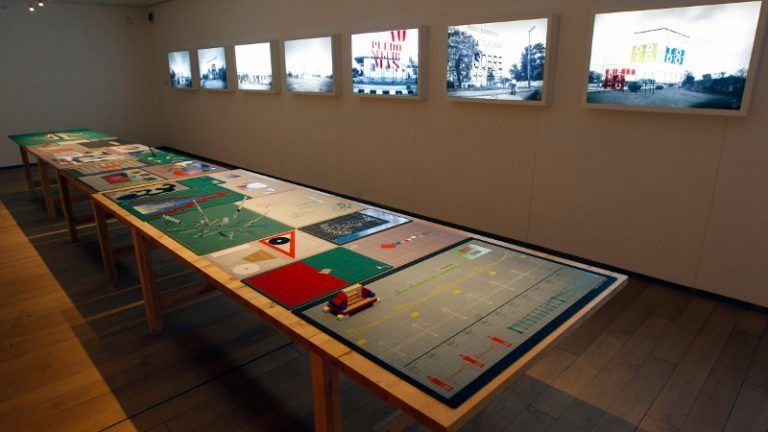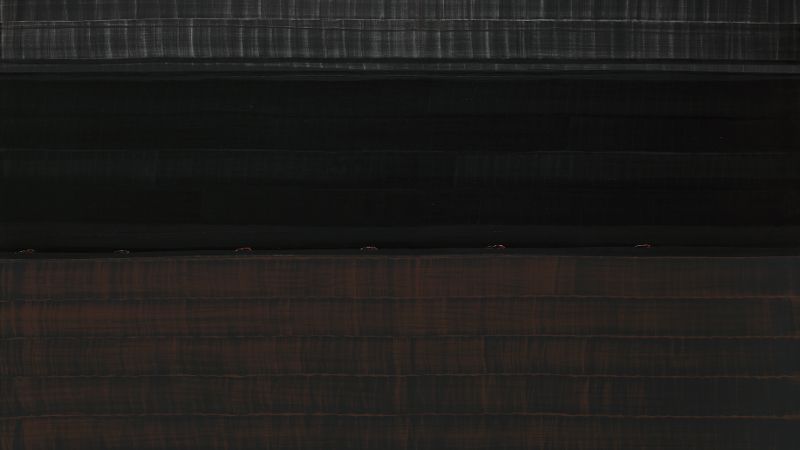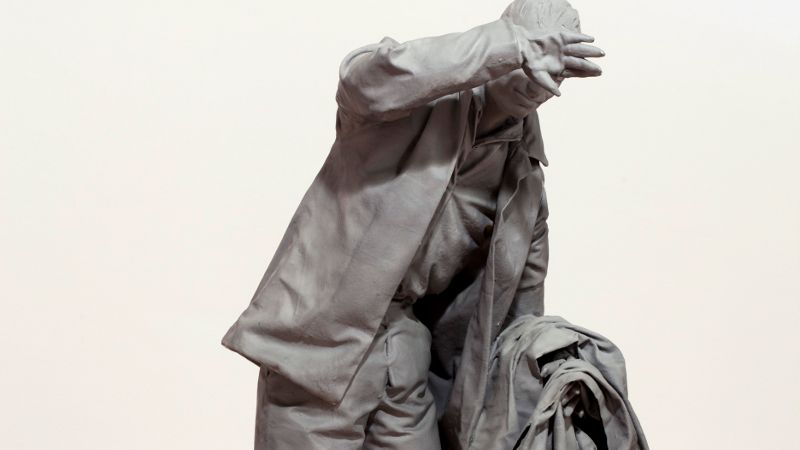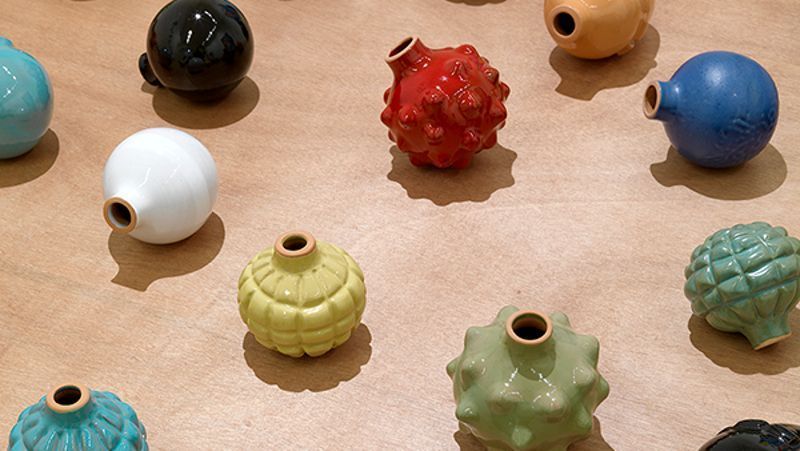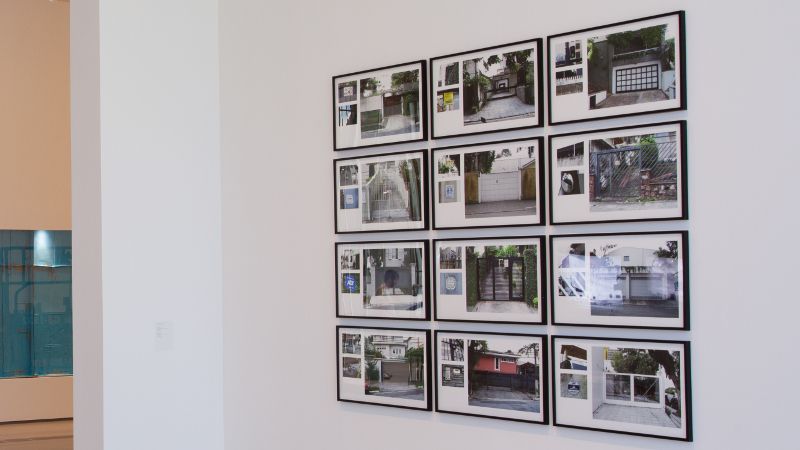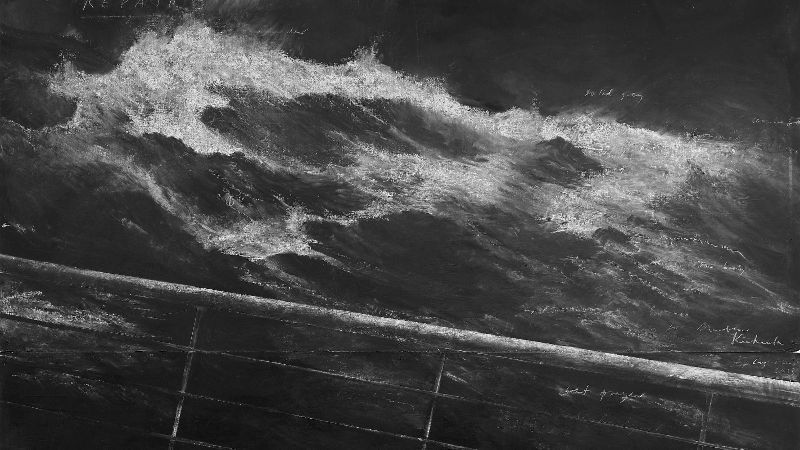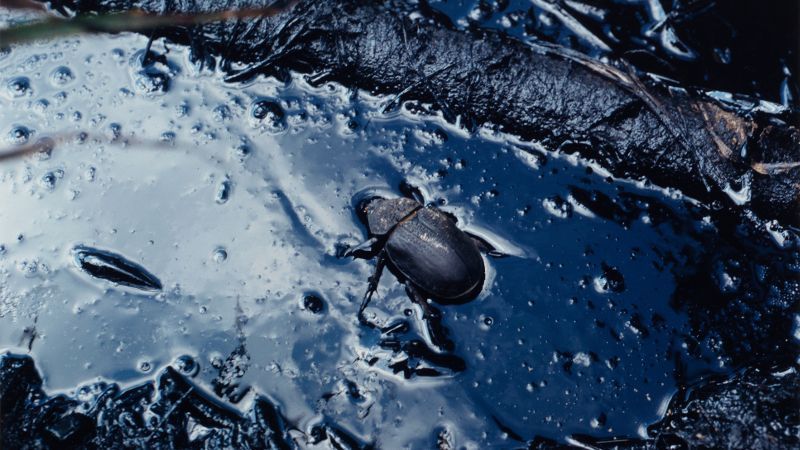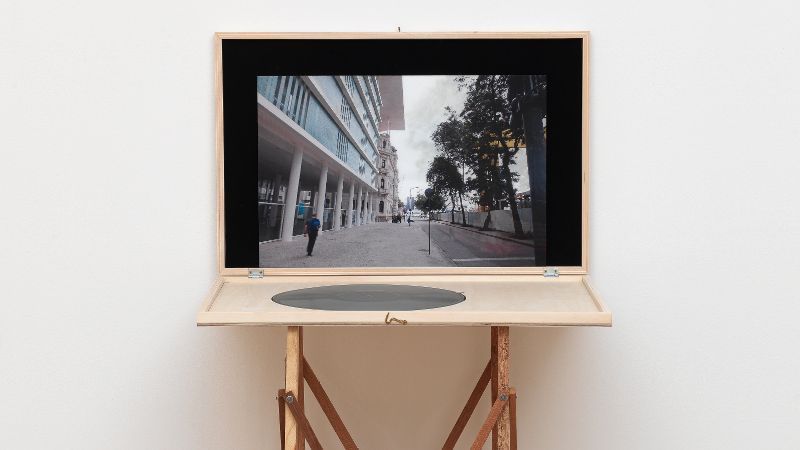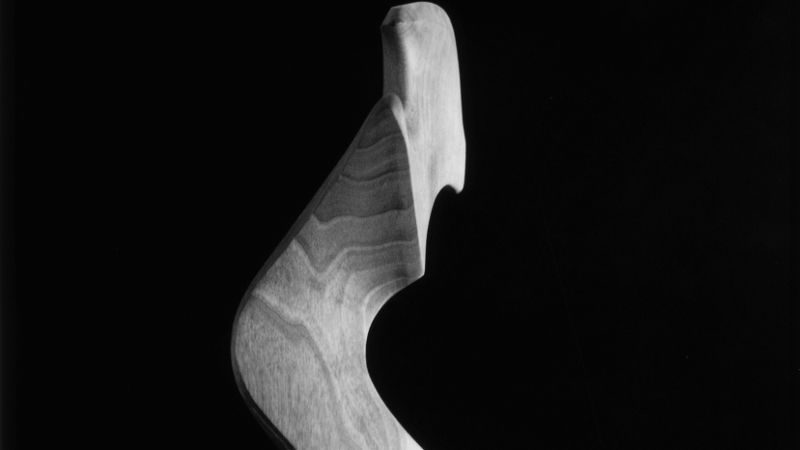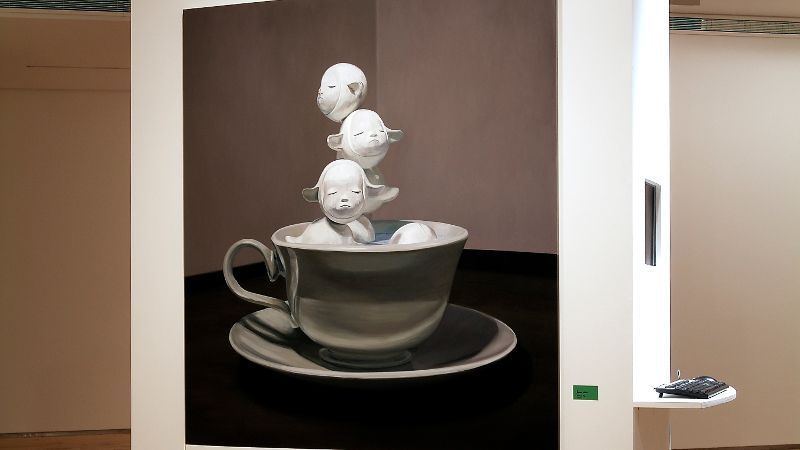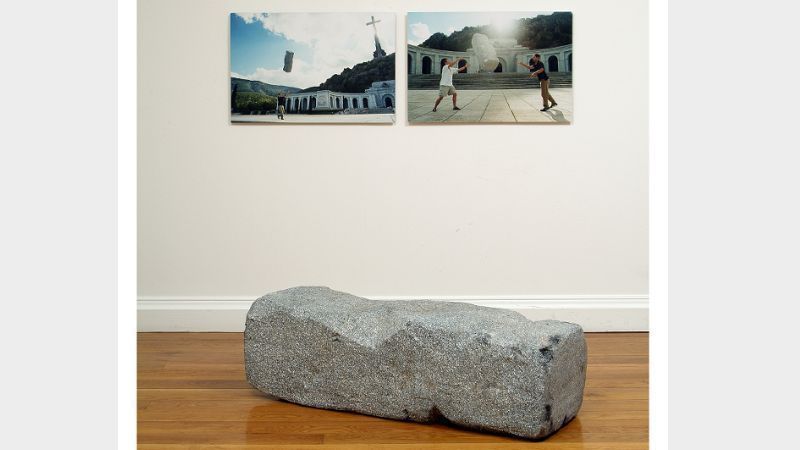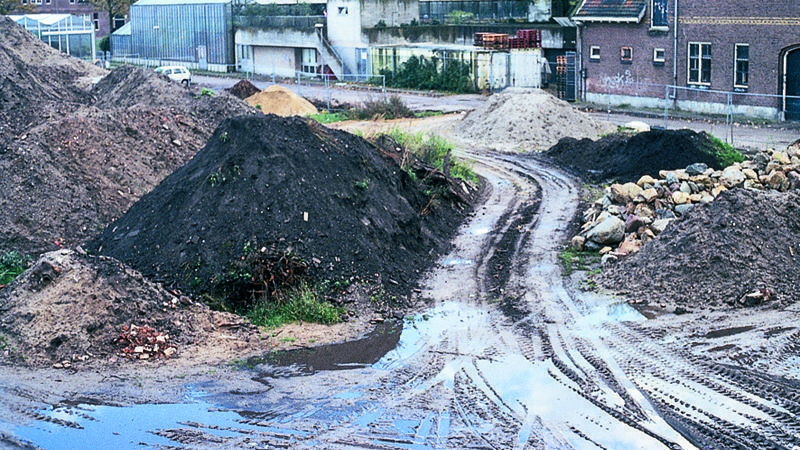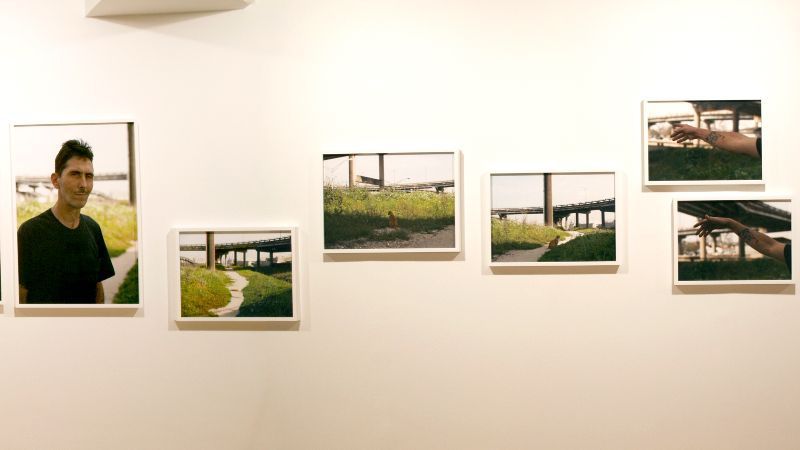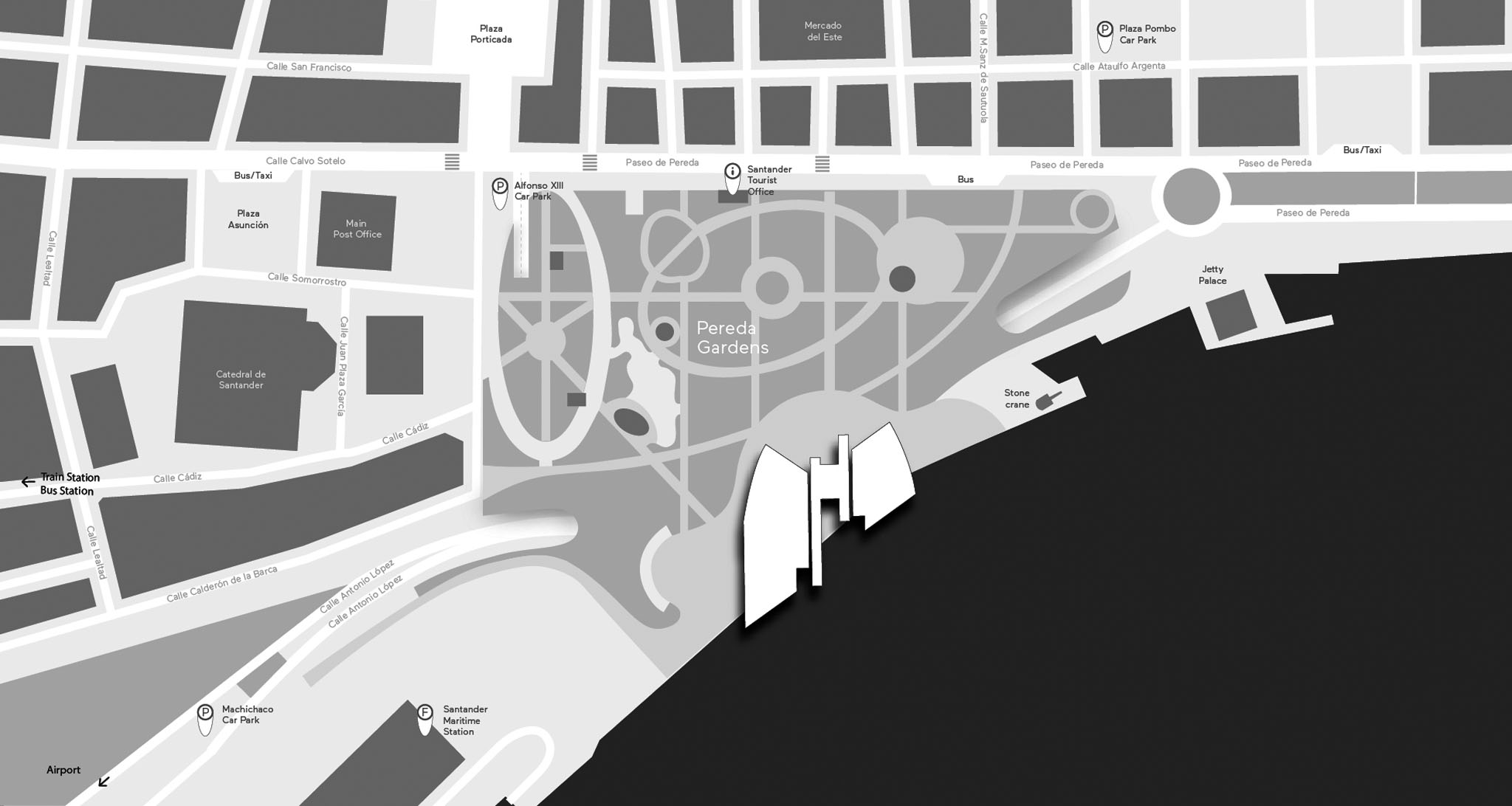Carlos Garaicoa explores the way architecture and propaganda are intertwined in Cuba, a country where the ruins of a former capitalist order are metaphorically augmented by the promise of a better future, per the ubiquitous government’s indoctrination campaigns. Confronting the limits of a utopia, he also reflects in more general terms upon the city, its decay and its constant evolution.
Core to his practice is a reference to architecture, which has a great influence on both his thinking process and the formal resolution of his work. Drawings, blueprints, maquettes, or cutting mats constitute an essential part of his formal vocabulary. Garaicoa has also worked on-site and altered photographs with ink, pencil or cotton thread and needles. Such images appear in the series of light boxes, featuring ghost buildings that bear Garaicoa’s own slogans and reflect upon the condition of culture in his homeland. The accompanying collection of cutting mats, lying on the tables, presents various two- and three-dimensional architectural plans and experiments.
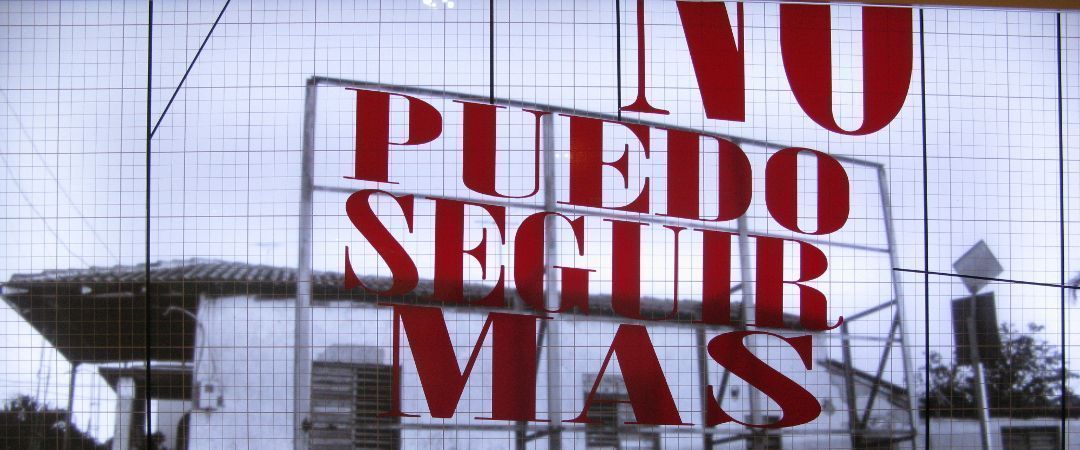
CARLOS GARAICOA, (Habana, Cuba, 1967). La palabra transformada (I, II, III, IV, V, VI, VII y VIII), 2009. Wood, metal, found objects, cutting mats and hand-cut adhesive tape. 8 light-boxes (94 x 63.5 x 10.5 cm. each); table (75.5 x 696.5 x 100 cm.). Installation: dimensions variable
